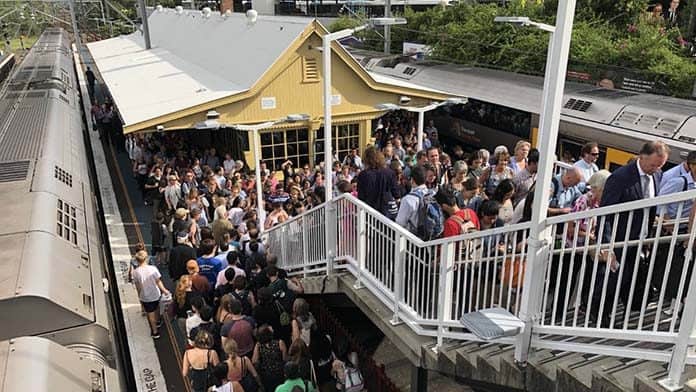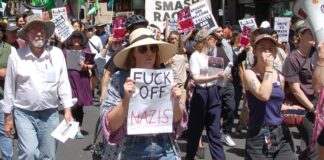Tony Abbott and Peter Dutton have begun campaigning to cut immigration, whipping up a scare about population growth.
Dutton kicked this off by saying Australia’s cities were “overcrowded” and blaming immigration levels for “gridlocked traffic in the mornings” and the state of hospital services.
Abbott joined in, using a speech at the Sydney Institute to blame immigration and population growth for “unaffordable housing and stagnant wages”. He demanded immigration be cut almost in half by 80,000.
But, unlike most of Abbott’s hard right policy ideas, this has drawn some wider support. NSW Labor leader Luke Foley backed him, saying Sydney was, “groaning under the weight of a surging population”. And Greens leader Richard Di Natale said he would be “very happy” to debate immigration levels because of the need to consider “environmental limits”.
Di Natale pointed out, accurately enough, that business wants high immigration levels in order to drive economic growth. But high immigration levels themselves are not a problem. It is the way governments and business have refused to pay for the infrastructure to accommodate this growth.
Scapegoating
Calls to reduce immigration are no more than racist scapegoating. Failing infrastructure and unaffordable housing in Sydney and Melbourne are caused by government policies.
Blaming population growth or immigration for the state of our cities is no different from Dutton’s racist efforts to say refugees “steal Aussie jobs” and use up welfare spending. It diverts the blame from those in government and big business who are really responsible for these problems.
And it comes at the same time as the government is launching a wider racist attack, trying to revive legislation imposing a more difficult English language test and proof that migrants support “Australian values” to gain citizenship.
Efforts by the Liberals to blame housing prices on migrants are particularly gross hypocrisy. It is rich investors who have driven prices to obscene levels, as a result of the negative gearing and capital gains tax discounts the Liberals themselves introduced. Following their introduction in 1999, house prices shot up as investors bought up second, third or fifth houses.
And the number of vacant homes has increased to 11.2 per cent of all houses around the country—an increase of 200,000 unoccupied homes in ten years.
Government failure
Governments of all stripes are to blame for the failure on infrastructure, transport and health.
The addiction to neo-liberalism has seen governments reduce tax on big business, squeezing the revenue it has to spend. Australia is one of the lowest taxing nations in the OECD club of rich nations as a proportion of the economy. Turnbull wants to cut corporate tax further.
As a result governments are relying on privatisation to fund new infrastructure. The NSW Liberal government is funding the WestConnex toll road and other projects through privatisating the power industry. It has also privatised the operation of ferries, buses, the Land Titles Office, ports and disability services.
Privatisation leads to worse services and job cuts as private operators try to boost profits.
There has also been a failure in urban planning. Australian cities have a low population density compared to cities in Europe. Transport planning academic Michiel Bliemer explains that, “the population density in London (80 people per hectare) and Paris (133 people per hectare) is significantly higher than Sydney (36 people per hectare)”. They are designed assuming a reliance on cars.
Australia’s cities lack adequate public transport, according to the Centre of Urban Research. Only 35 per cent of homes in Melbourne, Adelaide and Sydney are within 400 metres of a public transport service running at least once every half hour during weekdays, and half that or less in Perth, Brisbane, Canberra and Hobart. And services are clustered in inner city areas.
A 2014 study by the Department of Infrastructure estimated that 89 per cent of urban travel in Australia’s cities was by car. Yet there is no plan to shift this. Governments continue to invest in massive road building projects like WestConnex in Sydney.
Governments have known the extent of the population increases coming yet have failed to build the infrastructure needed.
Abbott and a number of others have denounced immigration as surging in the last year, with net migration growing to 245,400, around 50,000 higher than the year before. But net migration is not at a set level, because it includes temporary entrants such as international students, as well as the impact of those leaving the country.
The level of permanent migration has remained at around 190,000 for the last six years.
Blaming population growth threatens to further entrench the racism that has been pushed relentlessly by both major parties and the mainstream media against refugees, Muslims and migrants. It is the wrong target.
By James Supple






